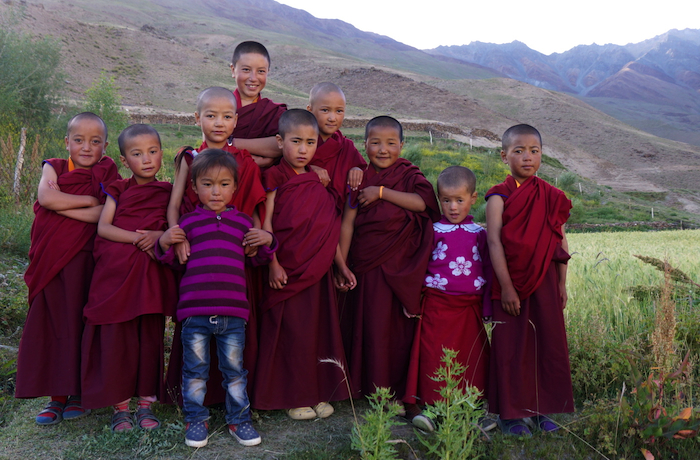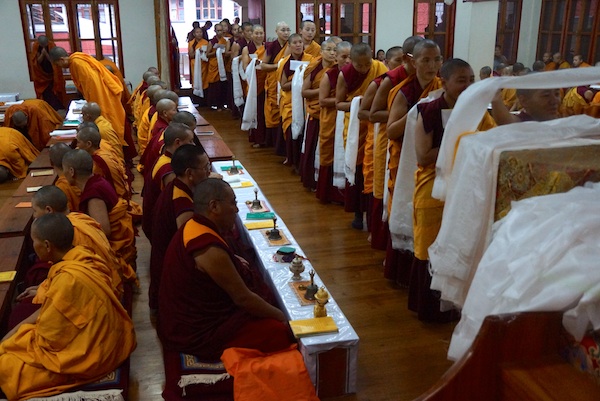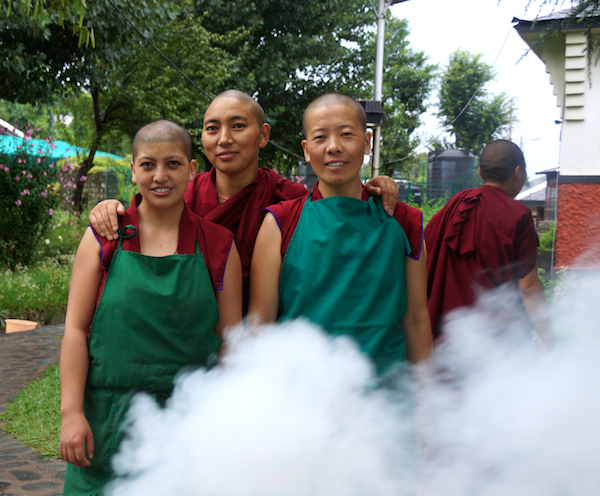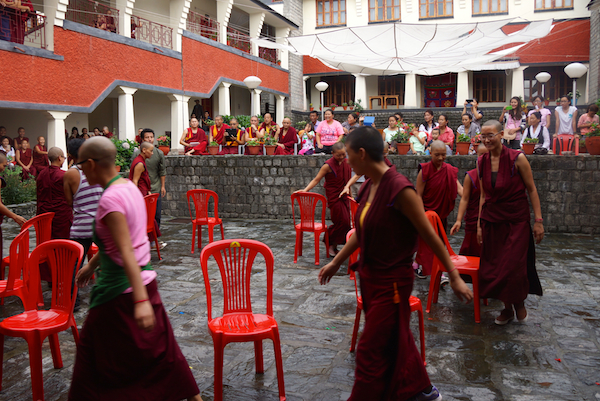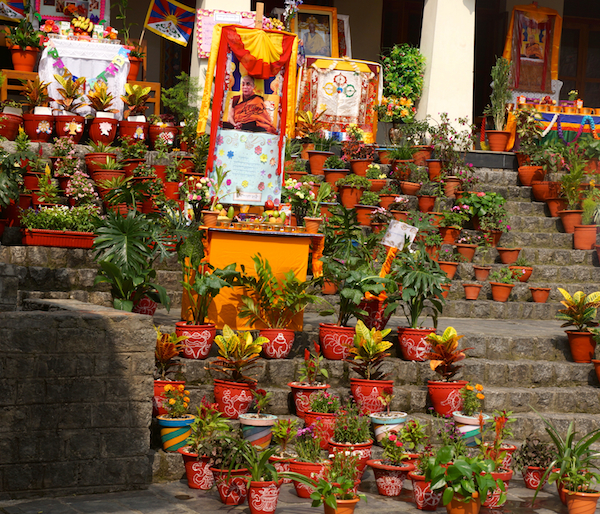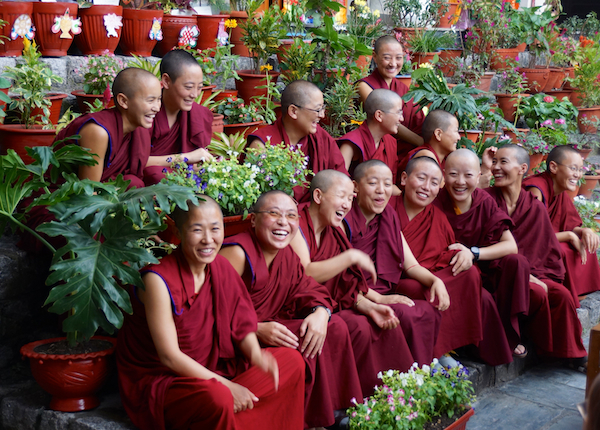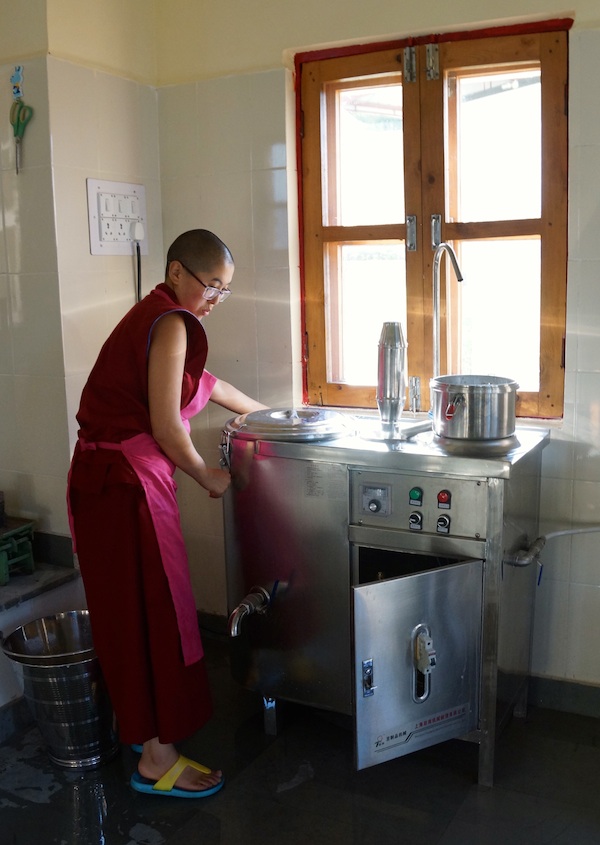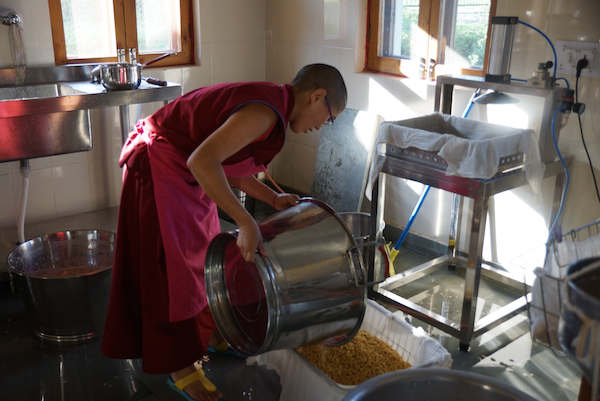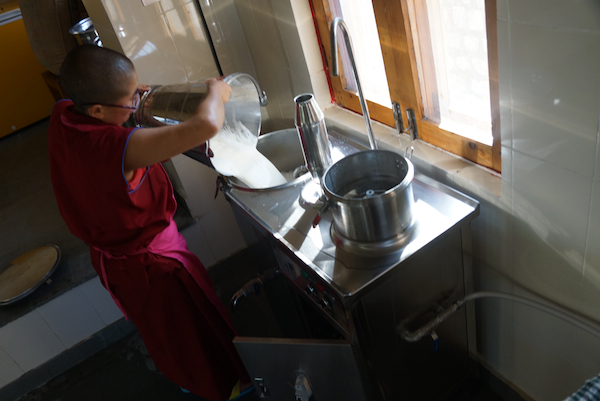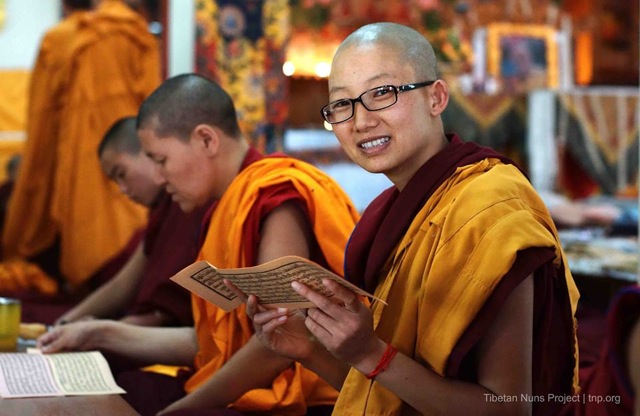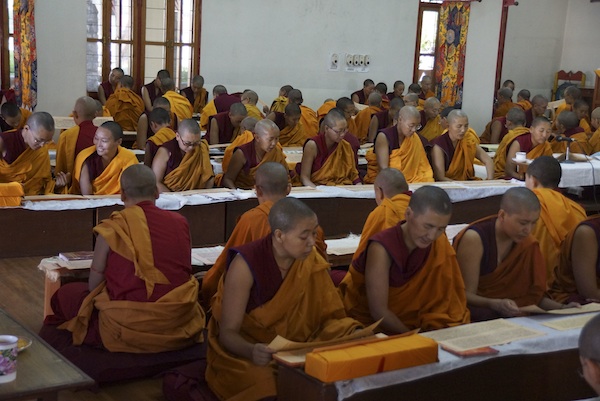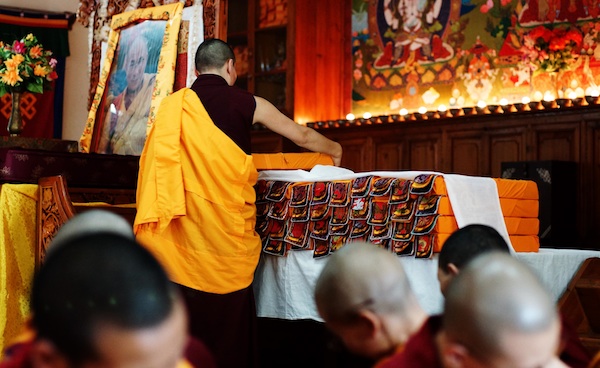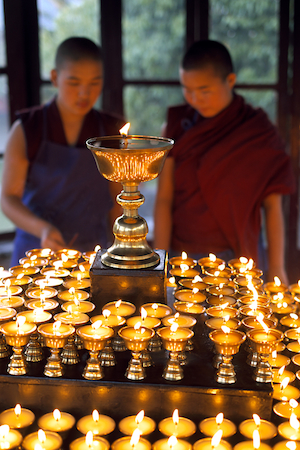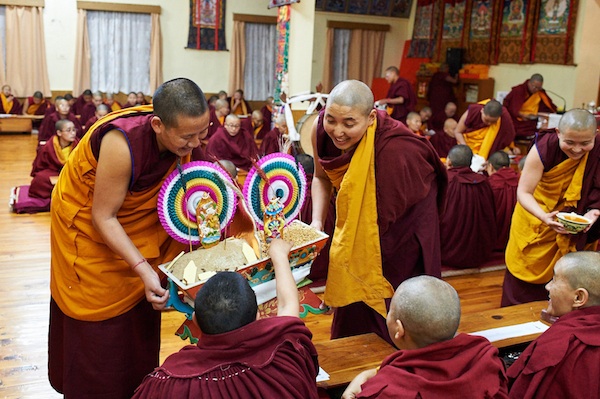Sponsorship is the heart of our programs at the Tibetan Nuns Project. Our supporters around the world help over 800 Tibetan Buddhist nuns at seven nunneries in northern India. The relationship between a sponsor and nun goes far beyond giving and receiving but can be deeply meaningful on both sides.
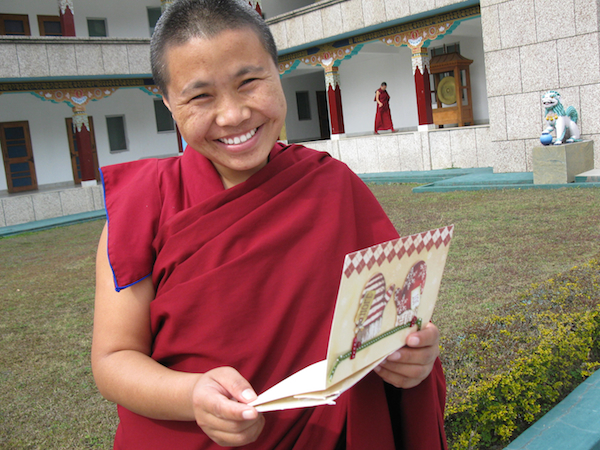
The joys of sponsorship. A nun at Sakya College for Nuns holding a card from her sponsor
We recently received a batch of photos from Sakya College for Nuns near Dehradun in the foothills of the Himalayas where over 50 nuns live and study. One of the nuns there, Venerable Kunga had received a gift of sleeping bags from her sponsor, Sister Paula, a Catholic nun in the US. Venerable Kunga distributed the sleeping bags among her classmates, teachers and two nun friends studying in the same institute.
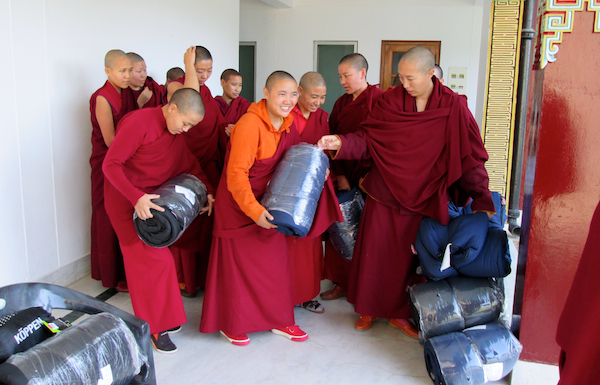
A generous sponsor in the USA, Sister Paula, sent sleeping bags for the nuns at Sakya College for Nuns in India.
The way the sponsorship system works is as follows: once you sign up to be a sponsor, you will be connected with an individual nun. You will receive her photograph and her story or biography and she will write to you at least two times a year. You have the opportunity, if you wish, to write to her.
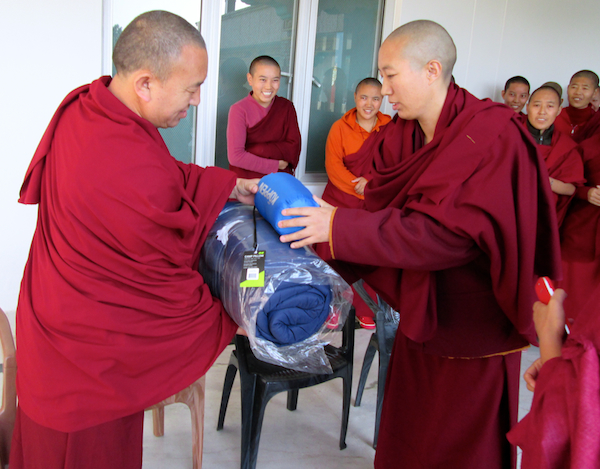 We have maintained our annual sponsorship cost at $360 a year since 1998, however some sponsors choose to give more knowing that there has been considerable inflation in India over the past 15 years. One hundred percent of sponsorship money goes directly to India.
We have maintained our annual sponsorship cost at $360 a year since 1998, however some sponsors choose to give more knowing that there has been considerable inflation in India over the past 15 years. One hundred percent of sponsorship money goes directly to India.

Sakya nuns with gifts from sponsors
The distribution system is equitable so that there is not a disparity between nuns who have sponsors and nuns who do not yet have sponsors. We do this by giving the money to the nunneries of sponsored nuns, rather than individuals themselves, and within each nunnery the funds are used collectively to cover the basic expenses of food, housing, clothing, medical care and education.
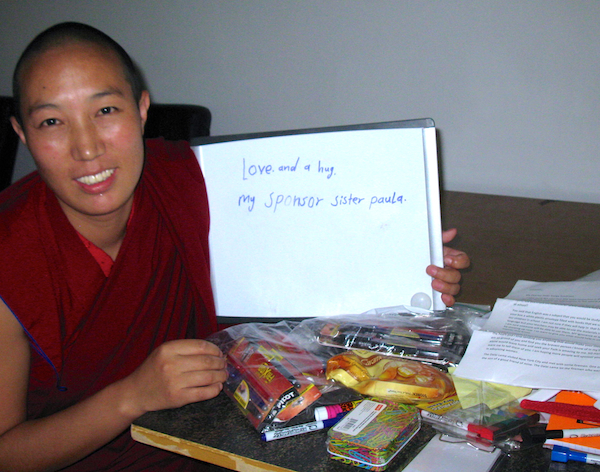
Returning the love. Venerable Kunga holds a special note for her sponsor, Sister Paula, a Catholic nun in the US.
Each nun receives 200 rupees per month for incidental expenses. In the case of nuns who do not reside in a nunnery (nuns in retreat), funds are issued to them on a monthly basis to cover food, rent and incidentals. When these nuns have additional needs, such as medical care or clothing, they may apply to the Project for assistance.
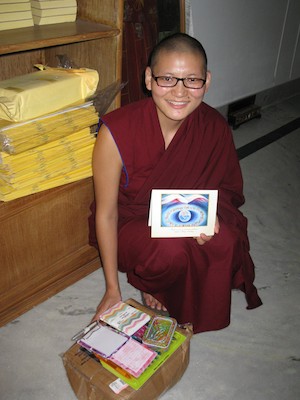
Sakya nun with a gift from her sponsor
Many sponsors also choose to send small gifts or pocket money to their nuns as direct donations. Contact us for details on how to do this. The Tibetan Nuns Project has also set up a “Wish List” through Amazon of items that are useful to the nuns such as clothing, shoes, socks and so on.
There is joy in both giving and receiving. Many of our sponsors have told us how much they love being a sponsor and how meaningful the relationship is to them.
Bonnie said, “When I saw the ad in Tricycle for sponsoring a Buddhist nun, I knew this could be one way to give back something for all that I was given to be born and raised in the US. A most powerful reward is to get a hand-written letter from one of ‘my’ nuns, which always move me to tears.”
Jan wrote, “I can make an important change in the life of a particular woman on the other side of the world whom I don’t really know and will not likely meet by helping her live as a nun. This makes all of sentient life more real to me, and every month when I write a sponsorship check, I have a moment of freedom from my own self-preoccupation and a moment of deep gladness that I can be of use to someone else.”
Here’s a note from Felicia: “I started years ago with one nun (same age as my son) and have stayed with her the entire time in terms of being a sponsor (co-sponsor now I think). I really like that I can support a project like this and also know there is a real person there who writes and I write to. She has been a blessing in my life, to say the least, which was a side benefit to being a sponsor in the first place.”
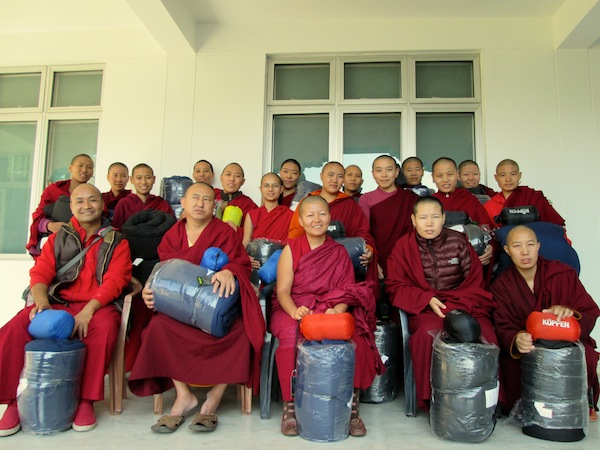
Sakya nuns with gifts of sleeping bags thanks to Sister Paula


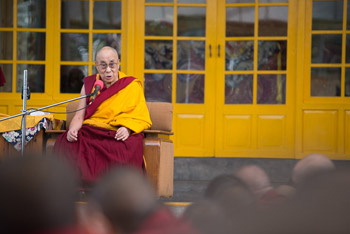
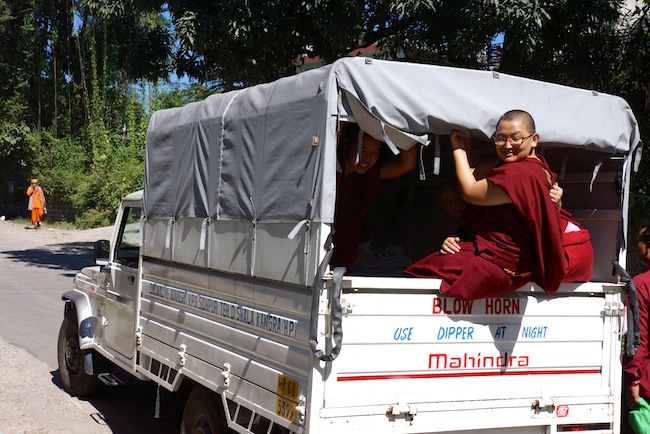
 In August 2015, we travelled for three days over rough, bumpy roads from Leh in Ladakh to Zanskar, a remote area in northern India. Located in this majestic, arid landscape is Dorjee Zong Nunnery, home to 19 nuns.
In August 2015, we travelled for three days over rough, bumpy roads from Leh in Ladakh to Zanskar, a remote area in northern India. Located in this majestic, arid landscape is Dorjee Zong Nunnery, home to 19 nuns.
